water
Latest
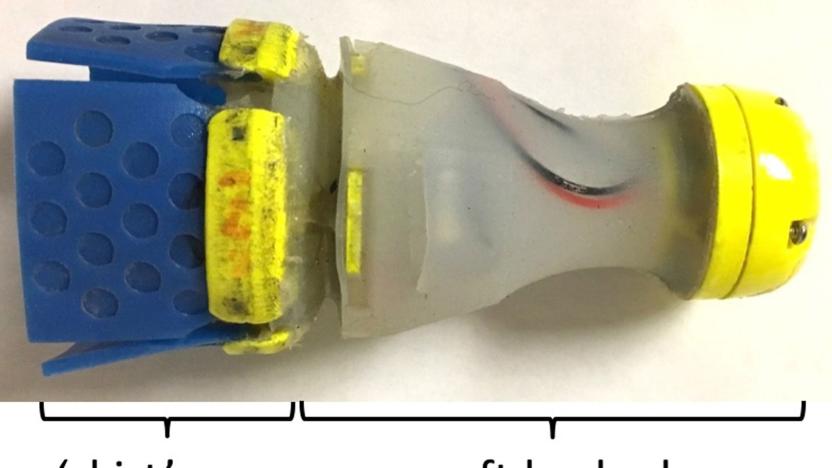
Tiny robot prowls water lines in search of leaks
Twenty percent of fresh water around the world is lost to leaks, but finding tiny pipe defects is nearly impossible -- especially in non-metal ones used in the developing world. MIT researchers have come up with a tiny, badminton bird shaped robot that can cruise through water distribution systems and find smaller leaks than other systems can. The tech could lead to search-and-repair systems that stop water shortages and catch leaks that can cause structural damage.
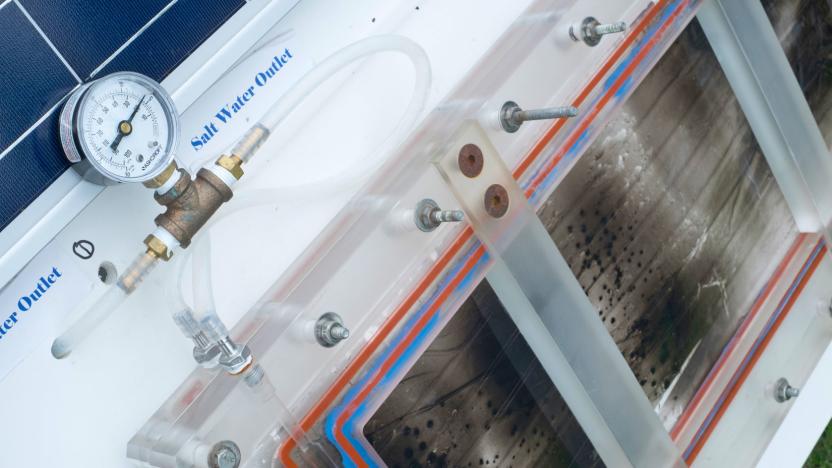
Researchers can now desalinate seawater with the power of the Sun
One of the oldest means of extracting potable liquid from seawater involves distillation, basically boiling the water into steam and then cooling the purified vapor in condensation tubes. Problem is, this method is incredibly power intensive with nearly half of the input energy going towards just boiling the water. But, a team of researchers from Rice University have developed a new technique that not only drastically reduces the amount of energy needed but can decouple the process from the power grid altogether.

Atom-thin water layers may lead to faster electric cars
So many battery breakthroughs focus on longer battery life (and for good reason), but what about the speed of delivering that energy? That's what North Carolina State University researchers want to solve. They've produced a material, crystalline tungsten oxide hydrate, that uses atom-thin water layers to tune electrical charge transfers for speed. When the team uses this material in a pseudocapacitor (which stores energy by transferring charges between electrodes and electrolytes), the result is a battery that theoretically represents the best of two worlds. It has the high energy density you'd expect, but it's also very quick at shuttling ions back and forth. That, in turn, could lead to performance breakthroughs in devices where rapid power is at least as important as raw capacity.

With new method, scientists find water on an exoplanet
Finding planets is hard, finding water on planets is harder, and finding water on exoplanets is pretty damn hard. And yet, a group of scientists claim to have achieved just that with the help of the Very Large Telescope in Chile. They believe that 51 Pegasi B, (also known as Dimidum), an exoplanet more than 50 light years away, has traces of water in its atmosphere.
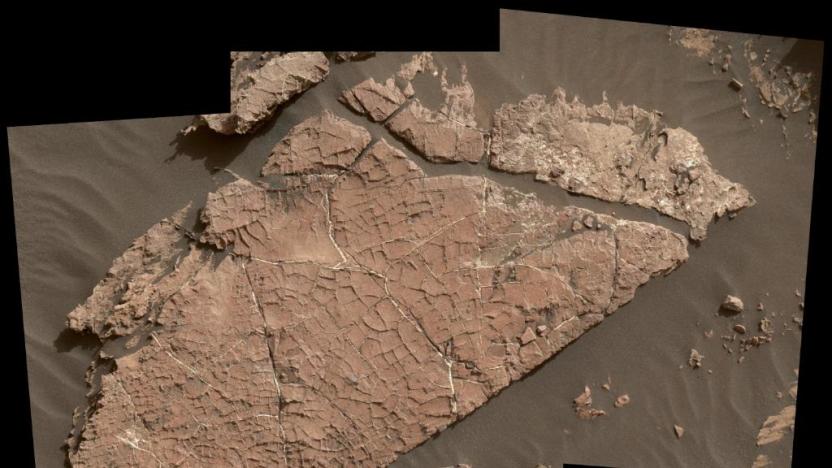
NASA's Curiosity finds new water evidence in possible cracked mud
NASA's four-year-old Curiosity rover spent 2016 discovering new clues to Mars' history, including veins potentially from evaporated lakes and mineral deposits suggesting the planet once had oxygen. The craft spent the beginning of 2017 examining a newly-discovered natural formation: Rock cross-cut with ridges, which are probably mud cracks.

Dwarf planet Ceres is 'oozing' with water
Scientists already knew via remote observations that Ceres, the dwarf planet (or humongous asteroid if you prefer), has plenty of water in it. The Dawn probe has now revealed that the asteroid is composed of as much as 30 percent water at the poles, explaining its ice volcano and weird bright spots. "It's just oozing," Planetary Science Institute's Thomas Prettyman told Nature, adding that you'd "just swipe and find the ice table" at Ceres' northern pole.

Nanotubes can turn water solid when it should be boiling
Scientists have long known that under the right conditions, small amounts of water can be coaxed into changing its boiling or freezing point. A pot of water takes less energy to boil on the top of Mount Everest, for instance, and liquid under pressure takes a little more heat to convert into steam. A group of researchers at MIT has recently taken this effect a step further -- observing that water in nanotubes can actually freeze into a solid at temperatures well beyond its natural boiling point.

Mars hides a gigantic ice sheet that may help astronauts
As a rule, the truly large deposits of ice on Mars are at the poles... right? No. Researchers using the Mars Reconnaissance Orbiter's ground-penetrating radar have discovered that the planet's Utopia Planitia basin is hiding a thick (260 to 560 feet) ice sheet larger than the state of New Mexico. It's at least 50 percent pure, too. Observers had long suspected that the area had water thanks to surface cracking and depressions, but the previous explorer, the Mars Odyssey spacecraft, couldn't study much deeper than the surface.

Hydroelectric dams cause more emissions than we thought
It turns out that you can't even rely upon hydroelectric dams as a source of hope and optimism in 2016. Researchers have found that the technology is far more damaging to the climate than previously thought. A new study reports that dams emit 25 percent more methane than expected, and are the cause of 1.3 percent of all human-created emissions. It's the hope that kills you, really.
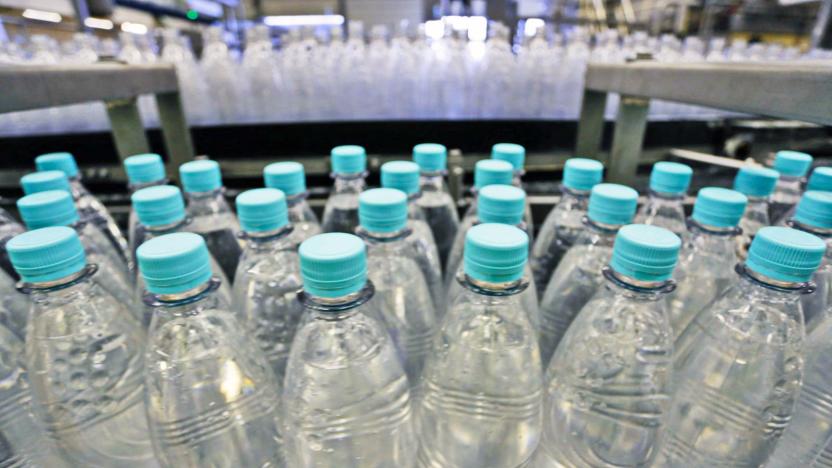
Latest XPRIZE contests focus on water production and women's safety
The XPRIZE nonprofit just announced its latest set of competitions aimed at "sparking breakthrough solutions to two urgent grand challenges." The first is the "water abundance XPRIZE," which focuses on harvesting clean water from the air using renewable resources. Specifically, the challenge asks participants to create a device that extracts a minimum of 2,000 liters of fresh water per day from the atmosphere, using 100 percent renewable energy. To make things even trickier, the cost can only be two cents per liter of water.

ICYMI: Hand over your car to the robot overlords
try{document.getElementById("aol-cms-player-1").style.display="none";}catch(e){}Today on In Case You Missed It: A new parking structure will autonomously park cars without a single human's assistance. Meanwhile Colorado School of Mines is testing small-scale water treatment plants that could be used in neighborhoods rather than one city location. And Canadians sent the US a darling little 'keep your head up' video that has us saying aww! The machine mating video on YouTube can be found here. As always, please share any interesting tech or science videos you find by using the #ICYMI hashtag on Twitter for @mskerryd.

Simulation of hidden ocean tides could lead to better sonar
There's a lot of tidal movement under the ocean's surface, but we haven't had a great understanding of it so far. Internal tides, created around continental shelf breaks, are far more difficult to predict than the ocean waves you can see. However, MIT researchers just made a breakthrough: they've accurately simulated those hidden tides for the first time. They melded a hydrodynamic model with data from a coastal sound wave study to replicate an ocean environment (in this case, a shelf break near the US' eastern coast) with a previously unseen level of complexity, complete with background elements like currents and eddies. The technique should be useful for predicting climates and fishing populations, but it could lead to a surprising amount of technological progress, too.
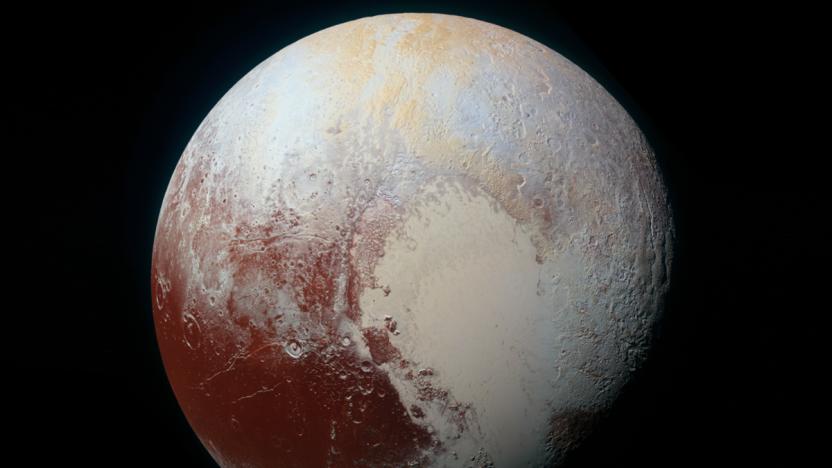
Pluto may have a 60 mile deep liquid water ocean
We used to think of Pluto as a remote frigid rock, but since the New Horizons visit, it's vying for the title of the solar system's most interesting (ex-) planet. An earlier study showed that its core is warm enough to support a liquid water ocean, and now we've learned that it might be huge -- at least 100 km (62 miles) deep. The evidence, according to the team from Brown University, comes from a likely impact with massive asteroid.

A totally new energy source in slow moving rivers
try{document.getElementById("aol-cms-player-1").style.display="none";}catch(e){}Today on In Case You Missed It: University of Michigan researchers spent years creating a water-harnessing river turbine to create electricity, called the VIVACE. It's the first time electricity appears to be effectively generated in slower rivers rather than oceans, but that's because the developers used physics to get turning turbines to agitate the water enough to create more energy for their neighboring cylinders. It's an as-yet prototype but a promising new development in the realm of water-powered electricity. If you're interested in the giant balloon video from China, that's here, and the JibJab app can be downloaded from an app store. As always, please share any interesting tech or science videos you find by using the #ICYMI hashtag on Twitter for @mskerryd.

There may be water on Mars, but not much
Remember those weird dark streaks that NASA's Mars Reconnaissance Orbiter found last September? These recurring slope lineae (RSL), as they're called, were originally thought to contain liquid water. On Mars, liquid water would obviously be a huge deal because it means both potential source of life and potential resource. Well, it turns out that there isn't nearly as much water in those RSLs as astronomers had hoped and certainly none that's potable. What's more, new analysis has estimated that the amount of liquid surface water on Mars cannot exceed that of Earth's driest deserts.

Postage stamp-sized device can disinfect water in minutes
In many parts of the world, people have to boil water or leave it for long periods under the sun to make sure it's clean enough to drink. Problem is, the former consumes fuel they can use for cooking or heating, while the latter takes too much time. A tiny device that's developed by Stanford University and SLAC National Laboratory could change that. While it's only half the size of a postage stamp, it can harness the the power of the sun to kill 99.99 percent of germs in as fast as 20 minutes. You simply have to drop it into the container of water you want to cleanse and leave it outside for a bit.

Mars' veins were created by vanishing ancient lakes
Scientists just produced stronger evidence that Mars once had water lakes that might have nurtured life. After combing over Curiosity rover data, the researchers determined that veins in places like the planet's Gale Crater were likely created by evaporating lakes whose sediments were buried, heated and corroded. The discoveries also suggest that the water in these areas would have been habitable, if not exactly pleasant to drink -- it would have had about 20 times more sodium and sulphate than your bottled water back on Earth. There were likely "multiple generations" of water, NASA adds.
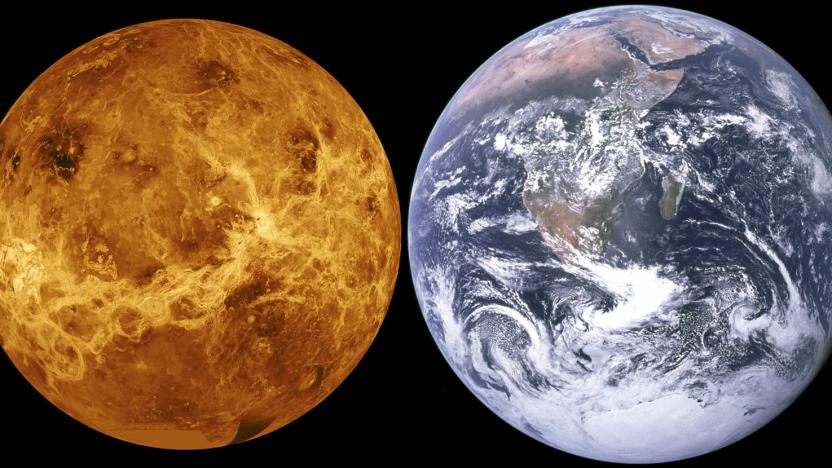
Venus may have supported life before Earth
Venus is a hellhole. Despite being much closer to Earth than Mars, its climate is off-the-charts insane, with average temperatures of 864 degrees F, crushing barometric pressure, and did I mention the volcanoes? It's hard to believe that as little as 750 million years ago, it may have had oceans of liquid water and an Earth-like, habitable climate, according to simulations from NASA Goddard Institute researchers. Those conditions may have endured for several billion years, until volcanoes transformed it into its present, hostile state.

Solar-powered machine turns urine into drinkable water
Scientists from a Belgian university have built a solar-powered machine that can turn urine into drinkable water. They deployed it at a 10-day music and theater festival in central Ghent, Belgium. The experiment was a success as the scientists were able to recover a 1,000 litres of unconsumed water, which will be used to make Belgian beer, from the urine of several partygoers.

iOS 10 warns when your Lightning port gets wet
Many mobile devices are water-resistant (some more than others), but they'll rarely tell you when there's a less-than-obvious danger. You might not find out that you've soaked something important until a gadget doesn't work. Apple appears to have a solution, though: recent betas for iOS 10 will serve a warning when there's liquid detected in your device's Lightning port. Ideally, this gives you time to pull an accessory (and dry out your gear) before there's any real damage.









